The Annapurna Base Camp Trek offers adventurers a unique blend of natural beauty and culture in Nepal. Spanning 15 days, this trek guides participants through vibrant villages and awe-inspiring landscapes, ultimately leading to the iconic base camp nestled among towering peaks. While it caters to those with moderate fitness levels, trekkers must still prepare adequately for the journey ahead. As they navigate this breathtaking terrain, they’ll encounter local traditions and cuisine that enrich the experience. What should trekkers consider before embarking on such a transformative adventure?
Good To Know
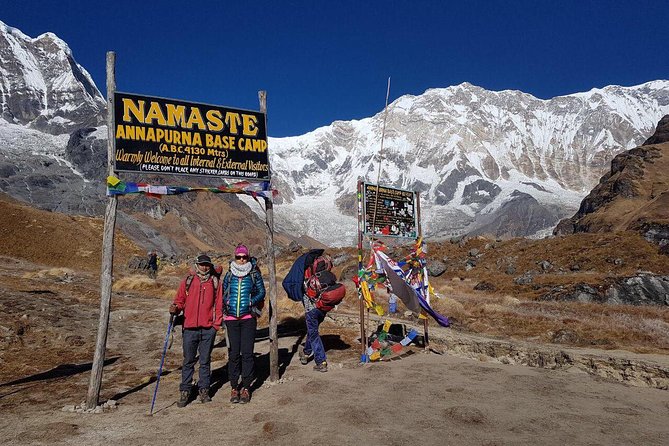
- The Annapurna Base Camp Trek is a 15-day adventure featuring stunning landscapes and rich cultural heritage in Nepal.
- The trek includes a sunrise hike at Poon Hill and culminates at Annapurna Base Camp, offering breathtaking mountain views.
- Accommodations include comfortable 3-star hotels in Kathmandu and teahouses during the trek with all meals provided.
- Proper preparation includes cardiovascular training, strength exercises, and packing essential lightweight gear for varied weather conditions.
- Trekkers enjoy local cuisine like Dal Bhat and Momos, and the experience is enriched by knowledgeable guides and welcoming teahouse hosts.
It's also worth checking out some other tours and experiences nearby.
Overview of the Trek
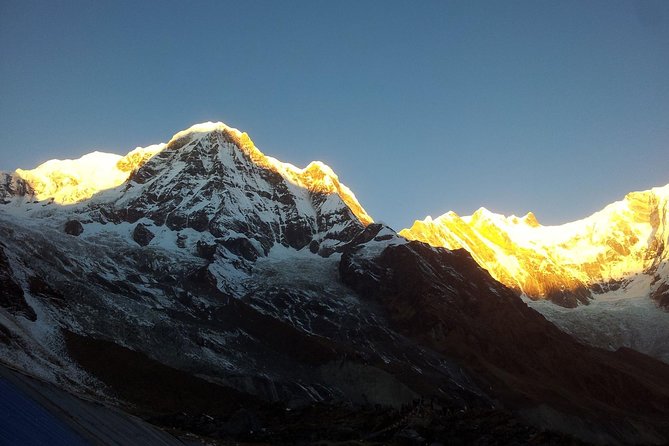
What makes the Annapurna Base Camp Trekking experience so unforgettable? This 15-day adventure in Nepal immerses trekkers in breathtaking landscapes and rich cultural heritage.
Starting in Kathmandu, hikers explore several UNESCO World Heritage sites before heading to the majestic Annapurna region. The trek features stunning views of the Annapurna mountain range, including the 10th highest peak in the world.
With a moderate fitness level required, it caters to a wide range of adventurers. The flexibility of private tours allows trekkers to adjust their itineraries as needed.
Accommodations include comfortable 3-star hotels in the city and cozy teahouses along the trail. This trek combines physical challenge with unforgettable sights and experiences, making it a top choice for outdoor enthusiasts.
Detailed Itinerary
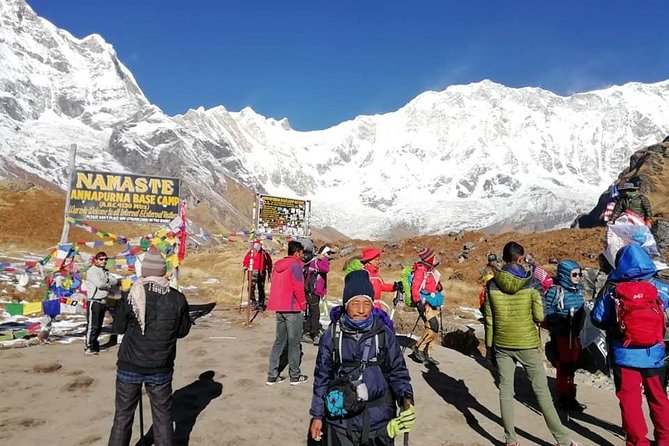
The Annapurna Base Camp Trekking itinerary offers a well-structured plan that guides trekkers through an unforgettable journey over 15 days.
Starting in Kathmandu, the adventure begins with sightseeing at iconic landmarks before heading to Pokhara.
The trek kicks off at Nayapul, leading through picturesque villages like Ulleri and Ghorepani, with highlights such as the sunrise hike at Poon Hill.
Trekkers then make their way to Annapurna Base Camp, seeing breathtaking views.
The return journey includes stops at Dovan and Jhinu Danda Hot Springs, allowing for relaxation after days of trekking.
Finally, trekkers drive back to Kathmandu, wrapping up their remarkable experience.
Each day balances adventure with the chance to soak in the natural beauty of the region.
Accommodations and Inclusions
Accommodations and inclusions play a crucial role in shaping the Annapurna Base Camp trekking experience. Trekkers can expect comfortable lodging and essential services that enhance their journey.
Here’s what’s included:
-
Airport pickup and drop-off – Smooth transfers at both ends of the trip.
-
3-star hotel accommodations – Quality stays in Kathmandu and Pokhara ensure comfort before and after trekking.
-
Teahouse accommodations during the trek – Each night, trekkers enjoy cozy teahouses with meals included (breakfast, lunch, and dinner).
-
Sightseeing entrance fees – All required fees for cultural experiences are taken care of.
While amenities like hot water and laundry are extra, these inclusions ensure a well-rounded, enjoyable trekking adventure in the majestic Annapurna region.
Essential Packing List
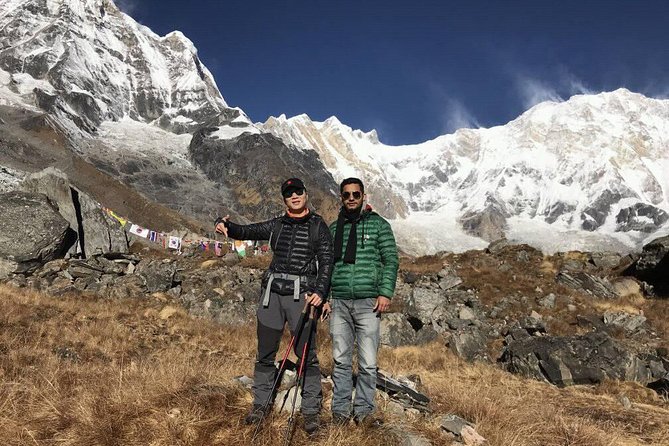
Packing wisely is key to a successful Annapurna Base Camp trek. Trekkers should prioritize lightweight, durable gear that can withstand varied weather conditions.
Essential items include a good-quality backpack, trekking boots, and moisture-wicking clothing. Layering is crucial, so a thermal base layer, fleece jacket, and waterproof outer layer are recommended.
Don’t forget a warm hat, gloves, and a buff for colder temperatures. A sleeping bag rated for sub-zero temperatures is also vital.
Additional necessities include a reusable water bottle, first-aid kit, and a reliable headlamp. Sunscreen and sunglasses protect against harmful UV rays at high altitudes.
Lastly, trekkers should pack snacks and a camera to capture the stunning landscapes. Following this packing list ensures a smooth and enjoyable trekking experience.
Fitness and Preparation
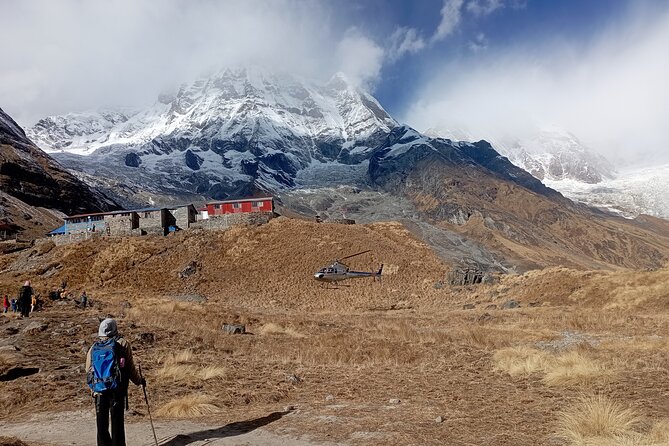
Preparing for the Annapurna Base Camp trek requires a solid fitness foundation and a commitment to training. Trekking at high altitudes demands endurance, strength, and flexibility.
To ensure a successful experience, trekkers should focus on the following preparation strategies:
-
Cardiovascular Training: Engage in aerobic exercises like running, cycling, or swimming to build stamina.
-
Strength Training: Incorporate resistance exercises targeting legs, core, and upper body to enhance overall strength.
-
Hiking Practice: Regularly hike on varied terrain while wearing a weighted backpack to simulate trekking conditions.
-
Flexibility Exercises: Include yoga or stretching routines to improve flexibility and prevent injuries.
With consistent effort and dedication to fitness, trekkers can enjoy the breathtaking journey to Annapurna Base Camp.
Local Culture and Cuisine
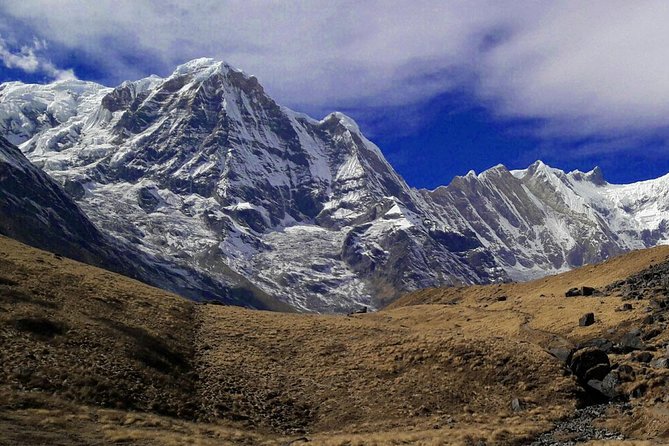
Trekking to Annapurna Base Camp not only offers stunning landscapes but also provides a unique opportunity to experience the rich local culture and cuisine of Nepal. Trekkers encounter warm hospitality, traditional music, and vibrant festivals that reflect the diverse ethnic groups in the region.
Local cuisine is a highlight, featuring dishes that sustain trekkers on their journey. Here’s a quick guide:
| Dish | Description | Where to Try |
|---|---|---|
| Dal Bhat | Rice and lentil soup, a staple meal | Teahouses along the trek |
| Momos | Steamed dumplings filled with meat or veggies | Local eateries in villages |
| Gundruk | Fermented leafy greens, a local delicacy | Teahouses in Ghorepani |
| Thukpa | Noodle soup, perfect for chilly nights | Dovan and Bamboo |
Exploring these flavors enriches the trekking experience.
Safety and Health Tips
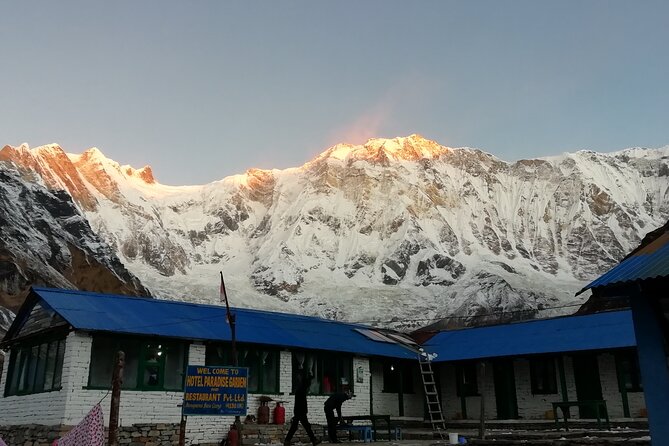
Ensuring a safe and healthy trekking experience at Annapurna Base Camp is essential for every adventurer. Proper preparation and awareness can make a significant difference.
Here are some vital safety and health tips:
-
Acclimatize Gradually: Allow your body to adjust to higher altitudes to prevent altitude sickness. Take rest days as needed.
-
Stay Hydrated: Drink plenty of water throughout the trek to avoid dehydration. Aim for at least 3 to 4 liters daily.
-
Wear Proper Gear: Invest in quality trekking boots and weather-appropriate clothing to protect against the elements and minimize injuries.
-
Listen to Your Body: Pay attention to any signs of discomfort or illness. Don’t hesitate to seek help if needed.
Following these tips will help ensure a rewarding and safe trekking adventure.
Trekker Testimonials
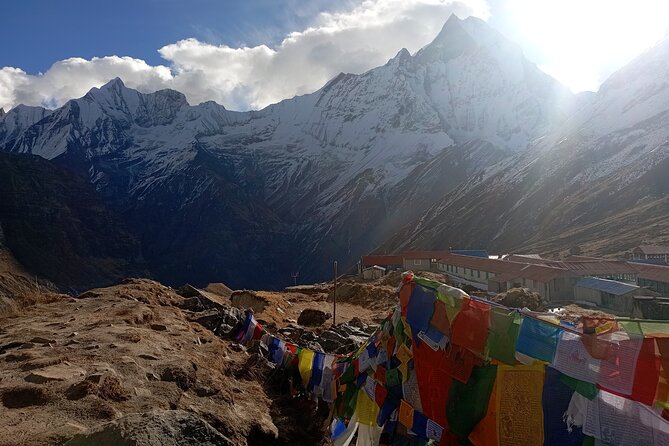
Annapurna Base Camp trekkers often share their unforgettable experiences, highlighting the breathtaking landscapes and the camaraderie formed along the journey.
Many trekkers describe the thrill of reaching the base camp, surrounded by towering peaks and pristine nature. They often praise the knowledgeable guides, noting how their expertise made the trek smoother and more enjoyable.
The warmth of the teahouses and the delicious local cuisine receive frequent mentions, adding comfort to the adventure.
Trekkers recommend engaging with Himalayan Sanctuary Adventure, commending their attention to safety and detail.
Here's a few more nearby tours and experiences we think you'll like.
Frequently Asked Questions
What Is the Best Time to Trek to Annapurna Base Camp?
The best time for trekking typically falls between September to November and March to May. During these months, conditions are favorable, with clear skies and moderate temperatures, making it ideal for memorable outdoor adventures.
Are There Any Age Restrictions for Participants on the Trek?
There’s no specific age restriction for participants, but it’s essential that trekkers possess a moderate fitness level. Guides often recommend younger or older individuals consult their health before embarking on such physically demanding adventures.
Can I Hire a Private Guide for the Trekking Experience?
He can hire a private guide for the trekking experience. This option enhances personal safety, provides tailored insights, and allows for a flexible itinerary, ensuring a more enjoyable and memorable adventure in the mountains.
Is It Possible to Extend the Trekking Duration?
It’s absolutely possible to extend the trekking duration. Many tour companies offer flexible itineraries, allowing trekkers to customize their experience. Just discuss options with the guide to ensure a memorable adventure tailored to their preferences.
What Communication Options Are Available During the Trek?
During the trek, trekkers can use local SIM cards for calls and data. Wi-Fi is available in some teahouses, but it’s often slow. Mobile network coverage varies, so planning ahead ensures better communication.
Not for you? Here's more of our most recent tour reviews happening neaby
- Everest Base Camp With Gokyo Lake 17 Days
- 14-Day Private Annapurna Base Camp Trekking and Multi Activity
- 5 Days Spiritual Yoga Meditation Retreat & Hiking in Himalayan Ridge/ Nepal
- Annapurna Luxury Circuit Trek
- Everest Base Camp Trekking-14 Nights/15 Days
- Short Everest Base Camp Trek 10 Days
- Kathmandu To Lukla By Helicopter Flight
- 10 Days Private Annapurna Base Camp Trek
- Mount Everest Scenic Helicopter Tour
- Day Tour to Chandra Giri Hill
- 3 Days in Kathmandu
- Trek to Everest Base Camp
- 4 Days Mardi Himal Base Camp Trek – 4500 Meters
- Kailash Mansoravar Overland Tour
- Kathmandu Durbar Square Sightseeing
The Sum Up
The Annapurna Base Camp Trek offers an unforgettable blend of stunning landscapes and rich cultural experiences. Trekkers can enjoy the majestic beauty of the Himalayas while enjoying the warmth of local hospitality. With proper preparation and a spirit of adventure, this trek is accessible to many. Whether savoring traditional cuisine or witnessing breathtaking views, those who embark on this journey will create lasting memories and a deeper appreciation for Nepal’s incredible natural and cultural heritage.
